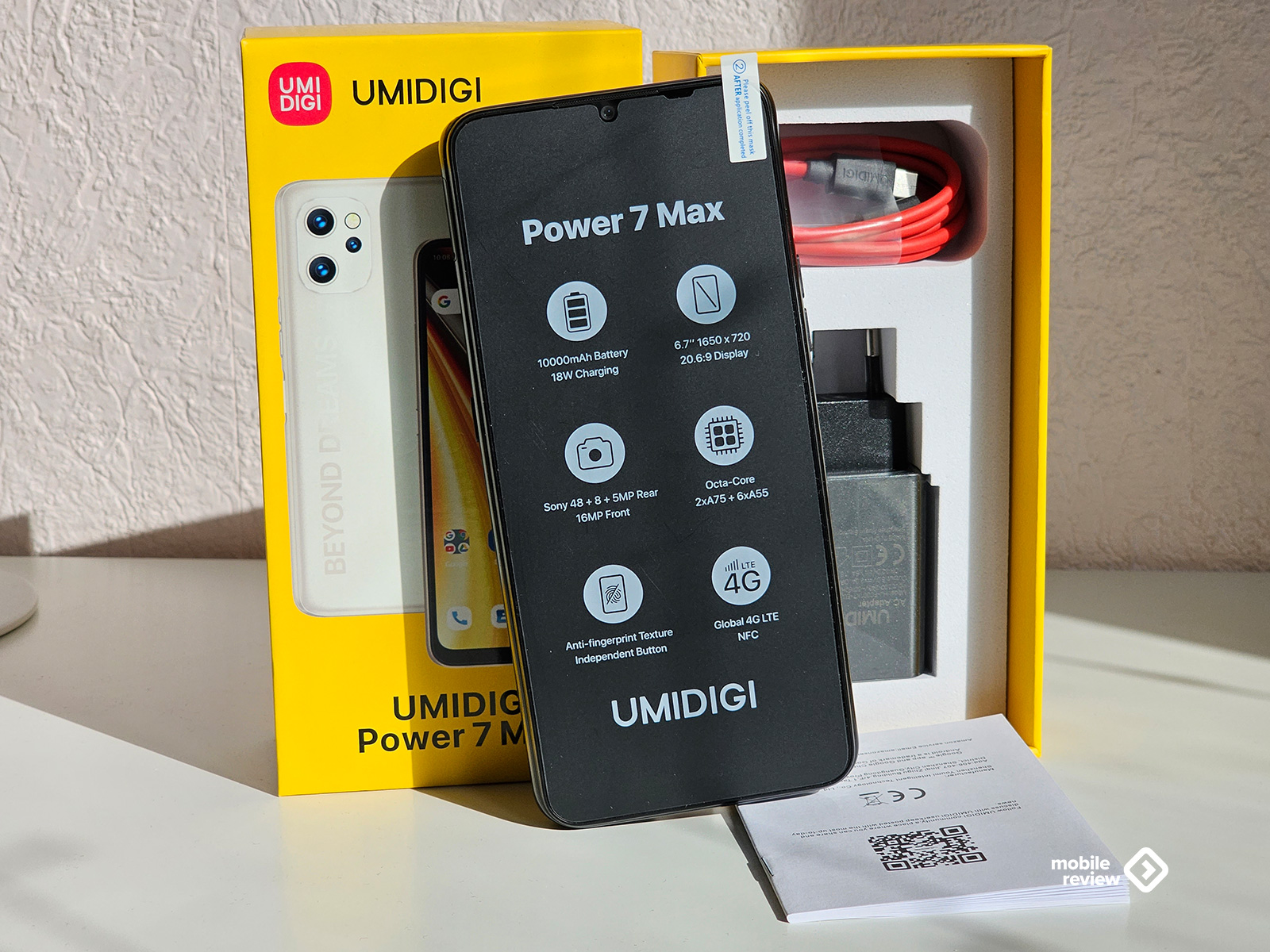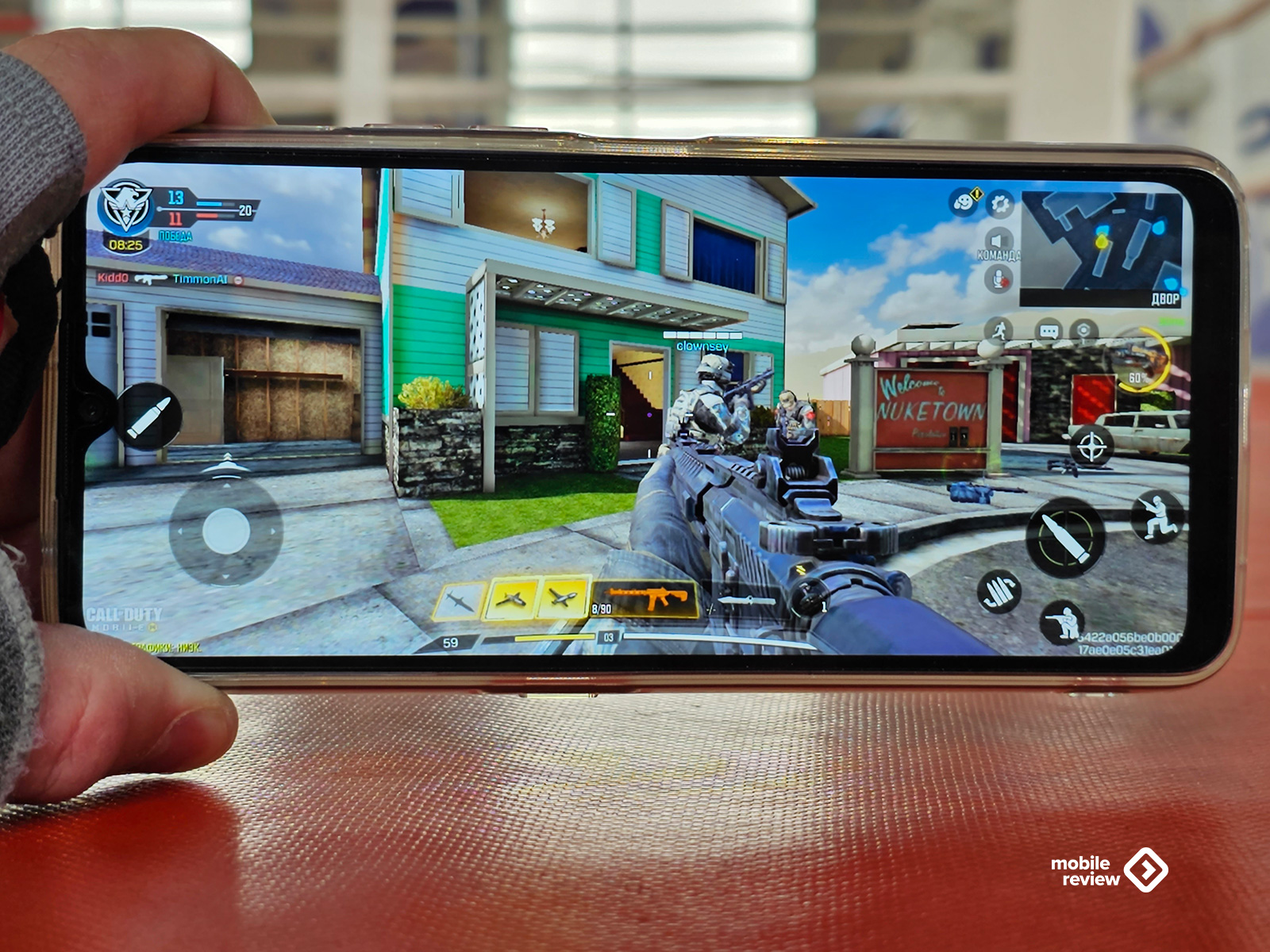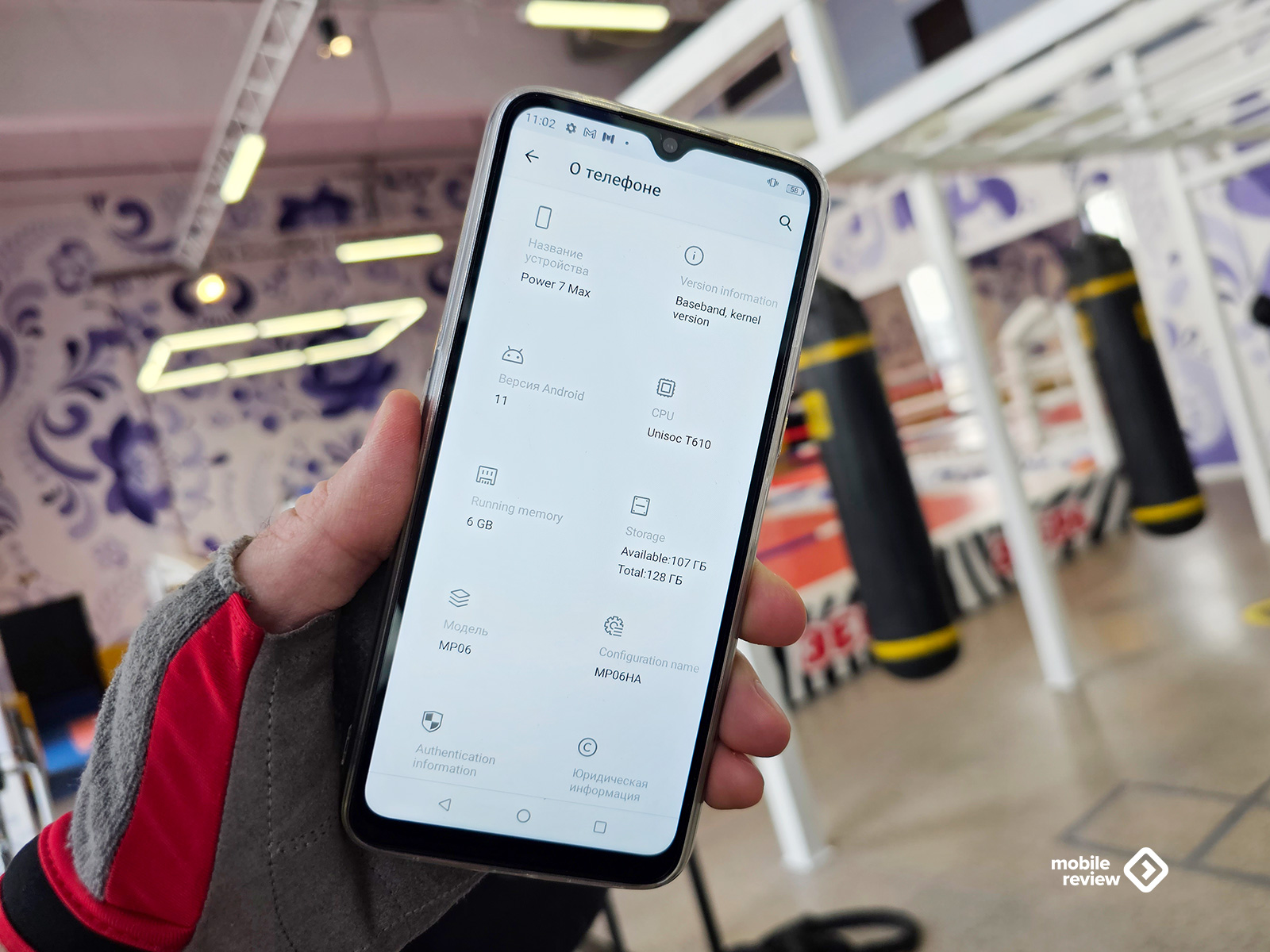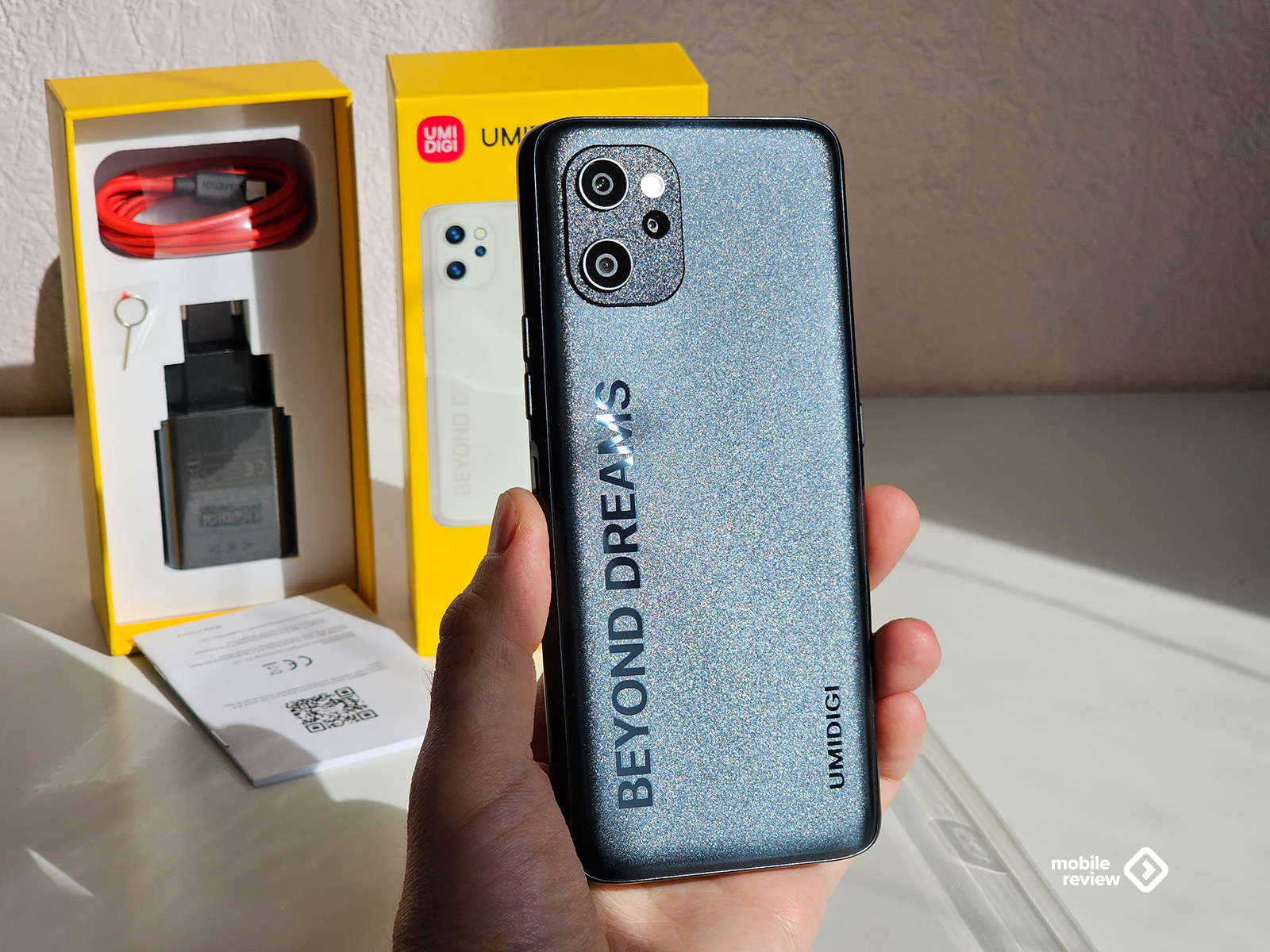DOSSIER
UMIDIGI

UMIDIGI Power 7 Max: I used a smartphone with a 10,000 mAh battery for a week. What conclusions did
Dozens of smartphones go through the editorial office every year. At the same time, we try to evenly distribute attention between devices of all price segments. So the UMIDIGI Power 7 Max got to the test. This is a smartphone with a giant 10,000 mAh battery, with which it was decided to be like a week as part of the experiment.
I remember well how before, behind giant batteries, the manufacturer tried to hide software flaws and outdated hardware. As a result, the smartphone was still enough for one day maximum. We even once published material on this topic. Have not studied such devices for a long time. It became interesting, but what has changed and whether something has changed at all. So we suggest starting with the hardware, because what’s the difference that there is a case in the kit, and a film on the screen from the factory, if it turns out that there is no performance, right?
What’s under the hood?...The technical characteristics of the UMIDIGI Power 7 Max are not amazing, but this is not outdated hardware either. Rather, I would like to call UMIDIGI Power 7 Max an average device in its price category with a number of exceptions (the amount and type of RAM, a set of sensors, resolution and a set of cameras).
The chipset used is UNISOC Tiger T610. This is an 8-core chipset, made according to the 12 nanometer process technology. The chipset has two powerful ARM Cortex A75 cores running at 1.8 GHz and 6 power efficient ARM Cortex A55 cores.
Considering that for most tasks, with the exception of games, the smartphone will have enough energy-efficient cores, such a choice of chipset is an additional plus in terms of battery life.

The performance of the smartphone is more than enough for games like Call of Duty Mobile or PUBG.
By the way, there is no need to be afraid of UNISOC chipsets. Rather, it should be said so. Everything from UNISOC Tiger T600 and above are very good chipsets, not inferior to Qualcomm or MediaTek. UNISOC has spread frantic activity to popularize its chipsets, especially in the modem part. The manufacturer cooperates with 200 operators in 130 countries, including Russia, prescribing all the necessary settings for smartphones based on UNISOC chipsets to support LTE frequency aggregation. The UMIDIGI Power 7 Max modem supports LTE Cat7, so it is not surprising that the smartphone has frequency aggregation and VoLTE in the networks of Russian operators.
The UMIDIGI official website boasts that the smartphone supports LTE “bands” around the world, but in fact this is not the merit of the manufacturer, but the chipset.
The smartphone has 6 GB of LPDDR4X memory, which is a little surprising, since usually in this price segment they prefer to install 3rd generation of RAM, rather than 4X. The drive is only 128 GB, which is not enough for 2023. Finding fault with the size of the drive, in general, is not worth it, since the smartphone has a separate microSD slot.

The smartphone has Wi-Fi 5 and Bluetooth 5.0, a full set of supported navigation (GPS, Glonass, Beidou, Galileo), and among the sensors there is a magnetometer, or, more simply, a compass. That is, the map shows which way the smartphone is turned.
By the way, about the sensors. UMIDIGI Power 7 Max surprises because, in addition to the accelerometer and compass, there is also a gyroscope. The gyroscope is most needed in games, and manufacturers in inexpensive smartphones prefer to save on such a sensor.
The smartphone has NFC, which works with the World Pay application.
Perhaps, in the end, UMIDIGI can be praised for a rather simple, but very true solution, thanks to which the smartphone is perceived much better: UMIDIGI Power 7 Max runs on pure Android.
Mandatory domestic applications are preinstalled in the smartphone. They were neatly folded into a separate folder. Several Google apps (mail, YouTube, etc.), contacts, calculator, radio, and that’s it! No promo apps or embedded ads.
Thanks to pure Android, the smartphone runs quickly and smoothly. During the week of the test, there were no situations with freezes or lags. Messenger, browsers, mail, go for a couple of rounds in Call of Duty Mobile. Of the unusual – this is a radio that has a built-in antenna, that is, you can listen to it in wireless headphones.
Main technical characteristics
Processor: UNISOC Tiger T610
Memory: 6 GB / 128 GB + separate microSD slot
Screen: 6.7 inches, IPS LCD, resolution 1650×720 pixels, protective film pasted out of the box
OS: Android 11
Camera:
48 МП Sony, F/1.8, 1/2», FOV 78°
8 МП, F/2.2, FOV 120°
5 MP macro camera
1080p video recording
Front-camera: 16 MP, f/2.2, 1080p video recording
Battery: 10 mAh, charging 18 W
Connection: 2G, 3G, 4G LTE, VoLTE, Wi-Fi 5, Bluetooth 5.0, NFC, USB Type-C OTG
Navigation: GPS, Glonass, Beidou, Galileo
Sensors: fingerprint scanner (side), accelerometer, gyroscope, proximity, illumination, magnetometer
Other: pouch included, 3.5mm jack, smart button to tie quick actions
Dimensions: 169.8 x 78.3 x 13.5mm, weight 290g
materials: glass, composite plastic
How does it hold?...Pure Android, up-to-date hardware and a big battery are much better than just a big battery.
Thanks to pure Android and the absence of “left” processes in the background, the smartphone practically does not discharge when it is idle. Overnight discharge is at worst 1%.
A 10,000 mAh battery is a thing, because it allows you to not think so much about charging your smartphone for a couple of days. This is unusual. For example, somewhere on the 3rd day on a single charge, I began to worry that the smartphone would not survive until the evening, since “only” 25% remained. But 25% for UMIDIGI Power 7 Max is about 55-60% for a regular smartphone with a 4500-5000 mAh battery.
In everyday mode, the smartphone lasted 3 days with 9 hours of screen operation. If you just turn on the video, then the smartphone will work for 20 hours. In the PC MARK battery test, which simulates everyday tasks (Internet, document editing, light photo and video editing, video playback), the smartphone with the screen at maximum brightness lasted almost 15 hours. Usually smartphones can withstand around 7-7.5 hours.
An 18W adapter was put in the box, which is certainly not enough. With such an adapter, the smartphone takes about 3.5 hours to charge from 0 to 100%. So the best scenario is to put it on charge at night.
And again, we should not forget that the battery charge is displayed as a percentage and 50% of the charge on the UMIDIGI Power 7 Max is not the same as 50% of the charge on a smartphone with a typical battery. Formally, 35-40% of the charge is enough for a smartphone for one full working day. This is provided that the smartphone will work closely.
What screen and what’s with the design?...To be honest, I initially thought that during the test, I would have the most complaints about performance. I looked forward to all the lags and “brakes”. And turned out to be wrong. Thanks to a nimble chipset and pure Android, the smartphone runs like clockwork. But the dimensions of UMIDIGI Power 7 Max made me think.
My main smartphone weighs 235 grams and has a diagonal of 6.8 inches, so initially the UMIDIGI Power 7 Max was not afraid of the size. However, the smartphone exceeded my expectations. UMIDIGI Power 7 Max is thick and heavy. Thickness – 13.5 mm, and weight – 290 grams. The closest analogue is the Galaxy Z Fold 4 when folded, which, however, is even thicker (1.5 cm), but weighs about the same. The boss uses the “fold” as the main smartphone, but I can’t imagine how you can carry a smartphone with similar dimensions in your pocket.

The screen in the smartphone is 6.7 inches. This is a good quality IPS LCD panel: nice color reproduction and good viewing angles (178 degrees). The brightness margin is enough to work with a smartphone on a clear day outside.
The screen in the smartphone is 6.7 inches. This is a good quality IPS LCD panel: nice color reproduction and good viewing angles (178 degrees). The brightness margin is enough to work with a smartphone on a clear day outside.
For my taste, the screen is initially well calibrated, but there are all the necessary settings if you want to make the image warmer or colder. At the same time, there are both preset settings and a point manual setting.
What can the camera do?...The UMIDIGI Power 7 Max camera set is good without discounts:
The main module is a 48 MP sensor from Sony.
The wide-angle camera is an 8 MP sensor.
And the third camera is a 5 MP macro module. Agree that you, like me, expected to see some kind of 2 MP stub in this paragraph.
16 MP selfie camera.
A healthy and rational set of cameras that does not have marketing modules. And the result was not long in coming. All modules are working, you can take pictures for each. Below are some sample photos.
I can’t find fault with color reproduction or autofocus, but, of course, the camera has disadvantages. For example, for some reason, the smartphone does not have a portrait mode. There is night shooting, there is a QR code scanner, but there is no background blur mode. In general, the problem can be solved by downloading a third-party camera application. Pure Android allows this.
How much are they selling and is it worth taking?...In stores for UMIDIGI Power 7 Max they ask for 14,990 rubles. To some extent, the smartphone has no competitors, since no one else on the market offers such a giant battery. In fact, buying a UMIDIGI Power 7 Max is 3 thousand more profitable than taking a smartphone with similar characteristics and buying a normal external battery for it.
Accordingly, it all depends on your use cases. The device is clearly not for everyone. For example, an office clerk who sits at the outlet all day does not need the UMIDIGI Power 7 Max. An exception is only if the office clerk is an inveterate hiker. However, if it is not possible to recharge a smartphone during the day or you are too lazy to carry a power bank with a cable, then UMIDIGI Power 7 Max is what the doctor ordered. In the sense that the smartphone works, there are no bugs, glitches and pitfalls. It won’t fall apart in your hands. The performance margin is enough for three years for sure. If you use it for the Internet, instant messengers and as a dialer, then it will last for many years.
Source: MobileReview







No comments:
Post a Comment